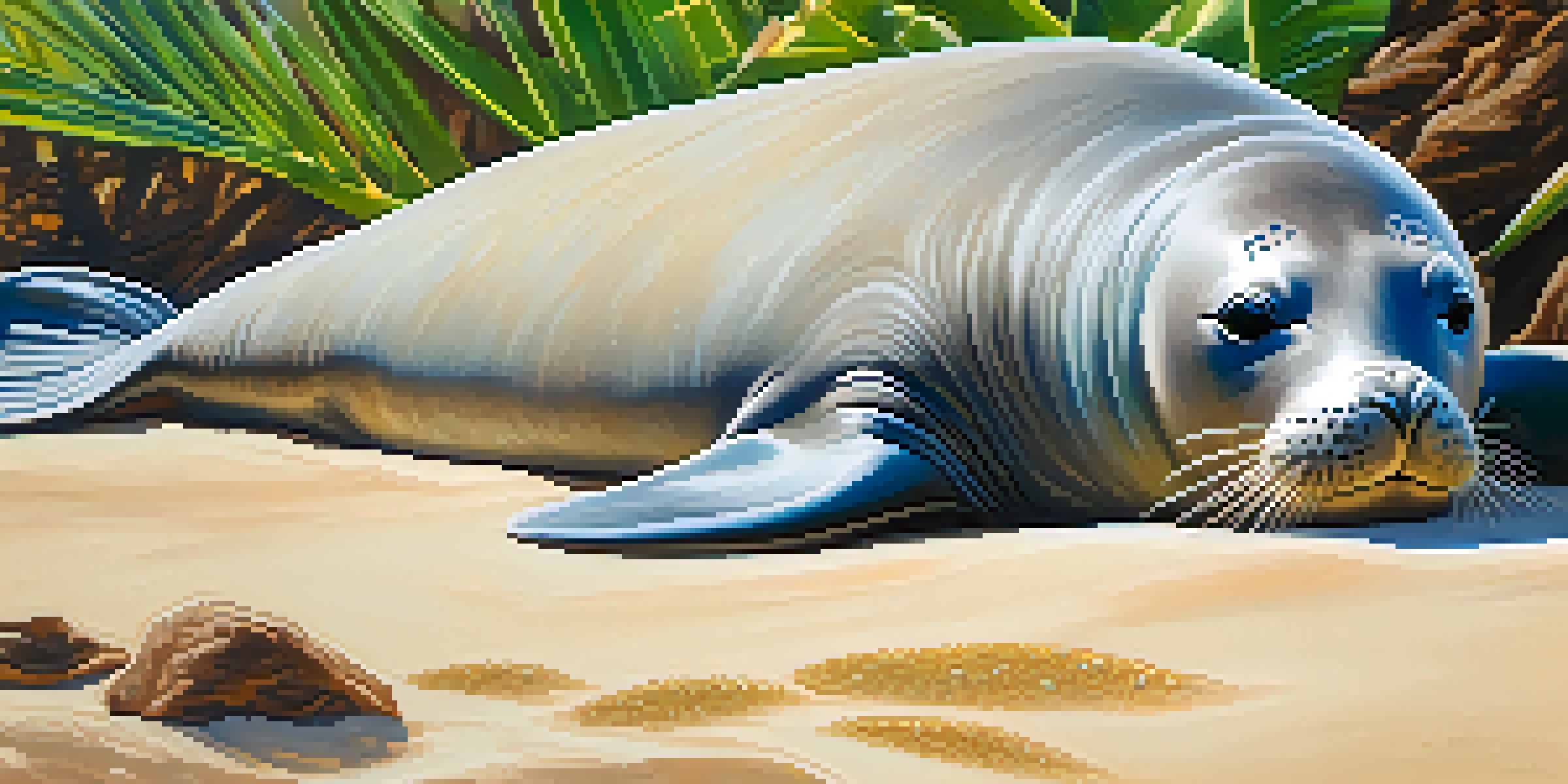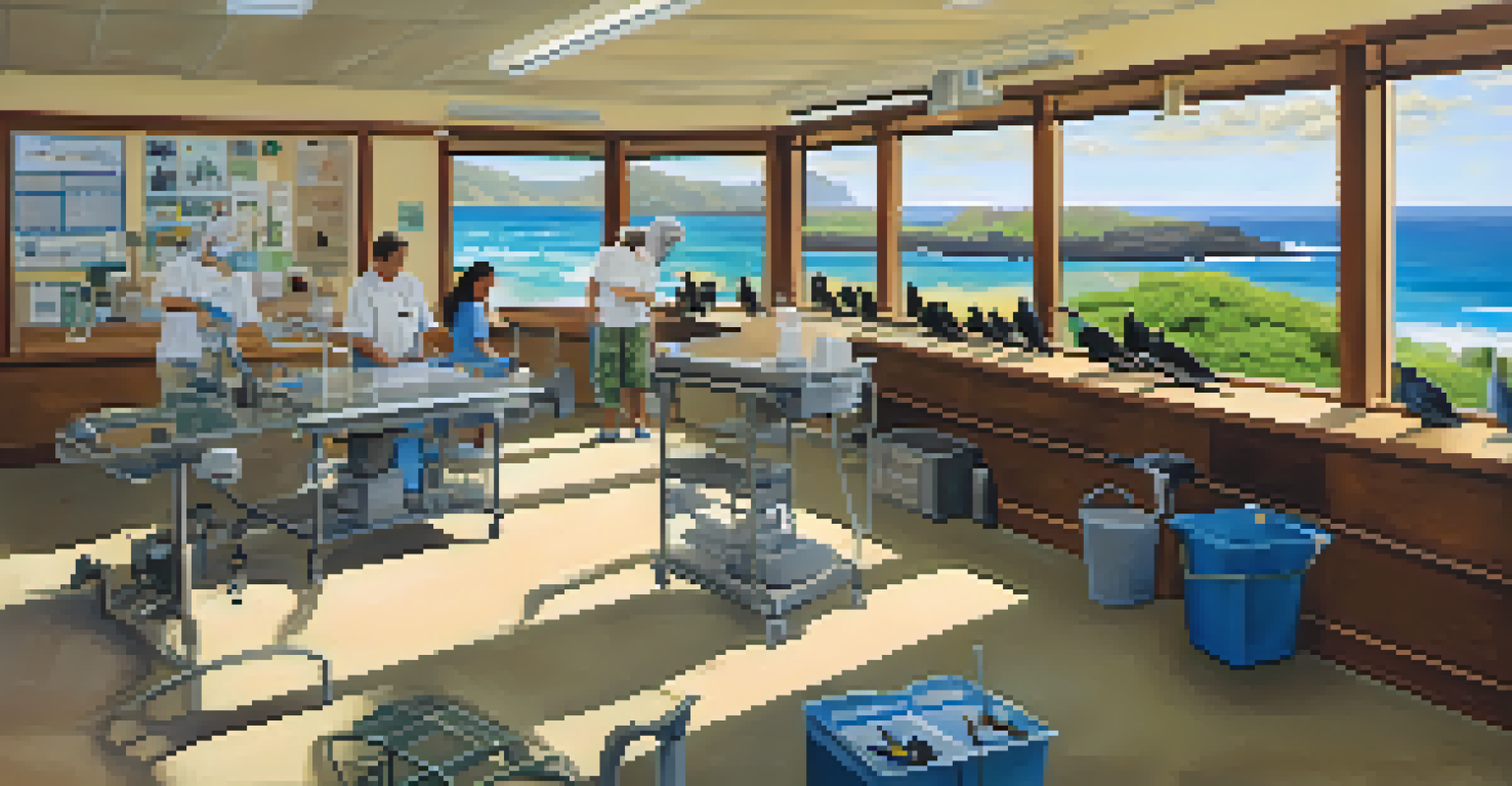Challenges Facing Wildlife Rehabilitation in Hawaii

Understanding Hawaii's Unique Ecosystem and Wildlife
Hawaii boasts a diverse range of wildlife, much of which is endemic, meaning these species are found nowhere else on Earth. This unique ecosystem is fragile, making wildlife rehabilitation particularly challenging. The delicate balance of the islands’ habitats means that even small changes can have significant impacts on local wildlife populations.
The greatest threat to our planet is the belief that someone else will save it.
For instance, the Hawaiian monk seal and the nene goose are just two examples of species that require specialized care. Rehabilitation efforts must take into account their specific needs, which can vary greatly from more common species found on the mainland. Understanding these nuances is crucial for effective rehabilitation.
Moreover, the isolation of Hawaii means that introducing new species or relocating animals can lead to unforeseen consequences. Efforts to support these unique animals must be approached with a deep respect for their natural habitats and behaviors.
Impact of Invasive Species on Wildlife Rehabilitation
Invasive species pose one of the most significant threats to Hawaii’s native wildlife. From rats to feral cats, these non-native animals can disrupt ecosystems and outcompete local species for resources. Wildlife rehabilitation centers often find themselves treating animals that have suffered injuries or illnesses as a result of these invasions.

For example, native birds have been known to fall victim to predation from invasive species, leading to a decrease in their populations. Rehabilitation efforts must not only focus on healing individual animals but also on mitigating the broader impacts of these invasive threats. This dual approach adds layers of complexity to rehabilitation efforts.
Unique Challenges in Hawaii's Wildlife
Hawaii's endemic species require specialized rehabilitation efforts that consider their specific needs and the fragile nature of their ecosystems.
Additionally, invasive plants can alter habitats, making it difficult for native species to thrive. The challenge lies in restoring these habitats while also rehabilitating the wildlife that depends on them.
Challenges of Funding and Resources for Rehabilitation Centers
Funding is a critical issue for wildlife rehabilitation centers in Hawaii. Many of these organizations rely heavily on donations and grants, which can be unpredictable and inconsistent. This financial uncertainty can limit the resources available for both animal care and habitat restoration efforts.
In a world where you can be anything, be kind.
Moreover, the cost of veterinary care, specialized equipment, and transportation can quickly add up. For instance, treating a seabird may require specific medical supplies that are hard to come by in such a remote location. As a result, centers often have to prioritize which animals receive care, leading to difficult ethical decisions.
Additionally, staffing can be a challenge, as trained professionals may be hard to find on the islands. Without a dedicated and skilled workforce, the quality of care provided can suffer, further complicating rehabilitation efforts.
Natural Disasters and Their Impact on Wildlife Rehabilitation
Hawaii's unique geographical location exposes it to natural disasters, including hurricanes, volcanic eruptions, and earthquakes. These events can cause immediate and widespread damage to wildlife habitats, making rehabilitation efforts even more urgent. When a disaster strikes, wildlife rehabilitation centers often have to mobilize quickly to rescue affected animals.
For example, after a hurricane, many birds may be displaced from their nests or injured due to fallen debris. Rehabilitation centers must work tirelessly to assess the impacts and provide necessary care. This rapid response requires planning and resources that may not always be available.
Invasive Species Threaten Wildlife
Invasive species disrupt native ecosystems, complicating rehabilitation efforts by necessitating a dual focus on individual animal care and broader ecological impacts.
Furthermore, the aftermath of natural disasters can hinder ongoing rehabilitation efforts. With habitats destroyed and resources strained, centers face the daunting task of rebuilding while continuing to care for injured wildlife.
Regulatory Challenges in Wildlife Rehabilitation
Hawaii has strict regulations regarding wildlife rehabilitation, which can sometimes create hurdles for those working in the field. These regulations are in place to protect native species and ensure that rehabilitation efforts adhere to best practices. However, they can also complicate the process for rehabilitation centers trying to navigate the legal landscape.
For instance, obtaining permits to care for certain species can be a lengthy and complex process. This bureaucracy can lead to delays in treatment, putting additional stress on already vulnerable animals. Understanding and complying with these regulations is essential, yet it often requires significant time and effort.
Moreover, the need for ongoing education and training in regulatory matters adds another layer of complexity. Rehabilitation staff must stay updated on changing laws and best practices to ensure they are operating within legal frameworks, which can be challenging given the dynamic nature of wildlife issues.
Community Involvement in Wildlife Rehabilitation Efforts
Community involvement plays a vital role in wildlife rehabilitation in Hawaii. Local volunteers and organizations often collaborate to support rehabilitation efforts, from rescuing injured animals to spreading awareness about conservation. This grassroots support can be instrumental in providing the necessary manpower and resources.
For example, educational programs can help raise awareness about the importance of protecting native species and their habitats. Engaging the community fosters a sense of responsibility and encourages proactive measures to prevent wildlife harm. The more people understand the challenges, the more likely they are to contribute positively.
Community Engagement is Essential
Local community involvement is crucial for wildlife rehabilitation, as it fosters awareness and support while enhancing the effectiveness of conservation efforts.
However, ensuring that community efforts align with rehabilitation goals can be tricky. There’s a need for clear communication and education to ensure that volunteers are well-informed and effective in their roles, ultimately enhancing the overall success of rehabilitation efforts.
The Role of Technology in Wildlife Rehabilitation
Technology is increasingly becoming a valuable tool in wildlife rehabilitation. From advanced veterinary care techniques to tracking devices, technology can enhance the effectiveness of rehabilitation efforts. For example, GPS tracking collars can help monitor the movements of rehabilitated animals once they are released back into the wild.
Moreover, social media platforms can be leveraged to raise awareness and gather community support. Rehabilitation centers can share success stories, urgent calls for help, and educational content that informs the public about local wildlife issues. This increased visibility can lead to more donations and volunteers.

However, the reliance on technology also presents challenges. Not every center may have access to the latest tools or training, which can create disparities in care. Bridging this technological gap is essential to ensure that all wildlife rehabilitation efforts are effective and equitable.